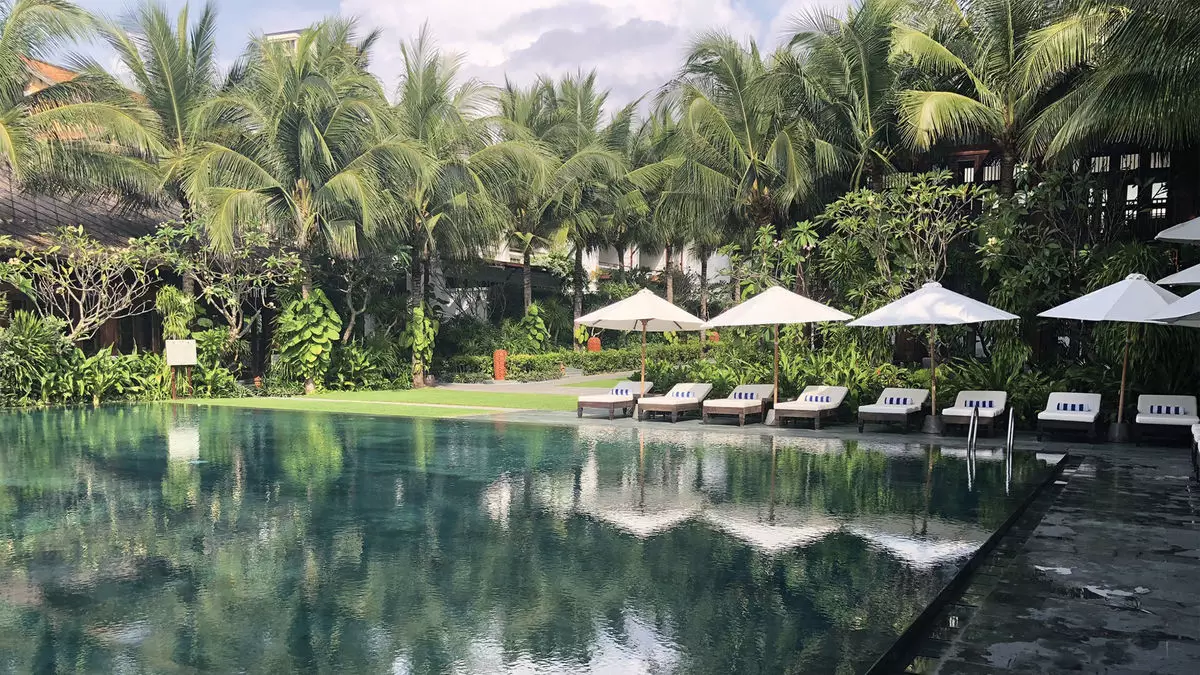Vietnam has undergone a remarkable transformation in the decades following the tumultuous Vietnam War, a conflict that left deep scars on the nation and its people. Once known as Saigon, the city now proudly bears the name Ho Chi Minh City, honoring a figure pivotal to its history. Nonetheless, the original name persists in everyday conversation, a subtle nod to the complex tapestry of the city’s identity. As I strolled through this sprawling metropolis of over nine million inhabitants, the charm of Saigon’s colonial architecture juxtaposed with modernity left a profound impression.
Walking tours highlight the city’s rich history through sites like the majestic Grand and Continental hotels, relics of French colonial culture that now serve under government management. Dining on the rooftop of the Rex Hotel, once a haven for war correspondents, offers a picturesque view not just of the skyline but of how far the city has come. A casual lunch here invites contemplation of the weight of history mixed with the vibrancy of current life. Yet, this juxtaposition compels visitors to embrace both the splendor and the complexity of the past.
Resilience of a City’s Memory
Among the highlights of my visit was the Independence Palace, which offers a glimpse into the nation’s tumultuous past, including its underground bunkers that were pivotal during the war. One cannot stand before this historic monument without a sense of awe and reflection. The site reverberates with stories, from the desperate helicopter evacuations of U.S. personnel to the struggles of the Vietnamese people who remained. Nearby stands the Pittman Building, where a clandestine rescue was orchestrated in 1975. Today, it hosts a rooftop café, cleverly bridging the dissonance between remembrance and revival.
What stands out is how the memory of the Vietnam War is not merely a narrative of loss and destruction but one of resilience. Visitors and veterans alike reflect on their experiences, often leading to powerful emotional reconciliations. As John Powell, president of Military Historical Tours pointed out, many people visit Vietnam seeking closure. This duality underscores a travel landscape that caters to both reverence and discovery—a nuanced balance I found refreshingly honest.
Historic Complexities in Modern Tourism
The reopening of Vietnam to tourists in 1997 marked a new chapter, allowing for a fusion of memories and experiences that highlight the resilience of its people. The influx of veterans along with their families has fostered a complex relationship with history that evolves with each new visitor. Yet, as the years pass, the waning number of veterans indicates a shift in the demographics of those intrigued by this vibrant country.
As Ed “Tex” Stiteler observed, while the anniversary of the fall of Saigon remains a significant moment for the Vietnamese, it does not resonate the same way for younger generations. Surprisingly, today it is those born after the war who are keen to experience Vietnam firsthand. This shift signifies the evolution from exclusively historical tourism to a rich exploration of culture, food, and modern life.
A New Generation Embraces Exploration
Younger travelers like Terri-Ann Mattadeen embody this evolution. Seeking both adventure and affordability, they flock to Vietnam for experiences that blend historical education with the joys of travel. As a high school history teacher, Mattadeen entered the country with the intent to explore its narrative but left with a deeper understanding of its living culture. Her narrative reflects the fusion of past and present, where the history of war coexists with the vibrancy of modern Vietnamese life.
Taking part in group activities—tattooing sessions, family homestays, and even nightlife excursions—illustrates how the journey becomes more than just tourism; it evolves into cultural exchange and connection. In a country marked by resilience and hospitality, visitors find themselves welcomed by locals eager to share their stories, further enriching the traveler experience.
Cultural Richness Unveiled
From exploring the Cu Chi tunnels to enjoying breathtaking trips in Halong Bay, the experiences available in Vietnam reveal a cultural richness that transcends the shadows of its past. The War Remnants Museum, while chronicling the darker moments of the conflict, does so with an eye toward education and remembrance, creating a space for reflection amidst the backdrop of vibrant Vietnamese culture.
Traveling to Vietnam is no longer just about revisiting a war-touched past; it is about forging connections with its people and discovering the heartbeat of the nation in everyday life. Whether through extensive tours or casual interactions, visitors gain insight into Vietnam’s progression, finding commonalities that resonate across generations, cultures, and histories. Each journey to this remarkable land opens the door not only to the sights and sounds of today but also to the layered richness of yesterday, ensuring that the narrative of Vietnam continues to evolve and inspire.


Leave a Reply